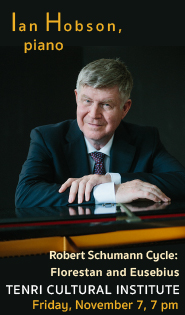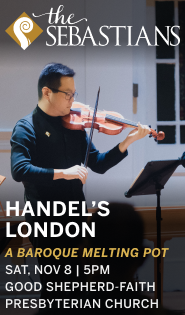Pianist Mamora displays his strength, story-telling gifts in Carnegie recital
The third time was the charm for pianist Jonathan Mamora with the Hilton Head International Piano Competition. In 2011, he failed to advance in the young artists’ competition, and in 2022, he did not place in the adult competition for pianists ages 18–30. Mamora tried his luck one final time before aging out of the HHIP and won first place in March 2025. His solo recital on Saturday evening at Carnegie Hall’s Weill Recital Hall was part of the competition’s prize package.
Mamora is no stranger to Weill, having made his Carnegie Hall debut there in 2023. The same holds for the winner’s circle, as Mamora has placed first in 11 of the 23 competitions he has entered since 2022.
In this recital, the Indonesian-American pianist from Southern California left no doubt as to what has fueled his success. Mamora is a natural-born musical storyteller who grasps the arc of a piece and illuminates it with careful attention to detail and drama. This talent was front and center in this dark-hued program of single-movement works, with no pauses and applause to interrupt their dramatic flow.
The sheer power of his playing is another of Mamora’s strengths. He never indulges in volume for its own sake, but he can make a piano thunder. He capitalized on it from the start, beginning the violent, dissonant trills which open Scriabin’s Piano Sonata No. 5.
It was not force, however, which propelled the Scriabin, but rather energy. It suffused the piece’s mercurial changes of mood, captured in playing that veered from the muscular to the lyrical. expressing the extremes of delicacy and force. The piece also highlighted another of the pianist’s singular gifts, the art of the pause, in which silence can convey as much meaning as music.
The recital featured the New York premiere of Lowell Lieberman’s Moment Musical, Op. 144, which he composed on commission for the 2025 HHIC. Mamora paired it with Schubert’s Moment musical No. 6 in A-flat Major, composed the year before the composer’s untimely death. Schubert’s final Moment musical is a lyrical song with unexpected modulations and subtle dynamic changes, as well as rests, which combine to create a sense of desolation. Mamora spun those melodies and ladened them with bittersweet emotion, which was especially effective in the upper reaches of the piano’s range.
Liebermann writes that his Moment Musical was in part inspired by Schubert’s six pieces, but the title is not meant to evoke any specific aspects of Schubert’s style. He rather sought to capture their spirit, without external reference points. In writing it for the competition, he sought to highlight the musicality of the performers, although he laced the helter-skelter middle section with technical challenges. The piece succeeds on those terms.
For Mamora, it was the opportunity to revel in the beauty of Liebermann’s expressive melodies and the delicate filigree that surrounded them. Apart from the drama of the middle section, it was one of the few instances in the recital where Mamora could relax and enchant with his playing. The piece was also a perfect palette cleanser for what was to come, Après une lecture du Dante: Fantasia quasi Sonata.
Known as the Dante Sonata,it is the final piece in the second volume of the Années de Pèlerinage. Inspired by a a reflection on the damned lovers Paolo and Francesca in Dante’s Inferno, the sonata is Liszt at his most operatic – vivid colors, thundering sonorities, intimate laments –a wild ride into hell.
Mamora met the work’s technical challenges head on, instilling terror in the thundering passages and aching lyricism in the melodic ones. He drew an amazing depth of color from the piano, as equally impressive in its thundering depths and in the shimmering passages in the higher octaves. It was a performance where virtuosity fueled drama, culminating in powerful chords that resonated with the hope of redemption.
The second half of the concert began with Mozart’s Adagio in B Minor. This was Mamora as a classicist, playing with impeccable technique and pristine musicianship. He employed them to explore the deep, poignant emotions at their deepest level in a performance notable for its focus, intensity, and lyricism.
Mamora concluded the recital with Liszt’s Sonata in B minor. As with the Dante Sonata, the B minor is a work of extremes, although they are contained in a tighter structure. Again, it was the pianist’s innate ability to refine and distill the work’s structure that was the basis for his powerful performance of this monumental work.
Mamora excelled in the fiery, technically demanding passages that seethed with passion. His execution of the contrapuntal passages with fleet, clean articulation was just one example of his technical prowess. The expanse of colors which he drew from the piano, however, was not restricted to the dark and dramatic. There were also luminous chords which leaned towards ecstasy and blissful playing both delicate and elegant, not least in the quiet ending.
For an encore, Mamora returned to Liszt, whose two monumental works were the pillars of the recital. He played “Italie” from Années de pelèrinage, Book Two, Sonnet No. 104, a gentle, melancholy ending to this fascinating recital of emotional and technical extremes by a rising star in the piano realm.







